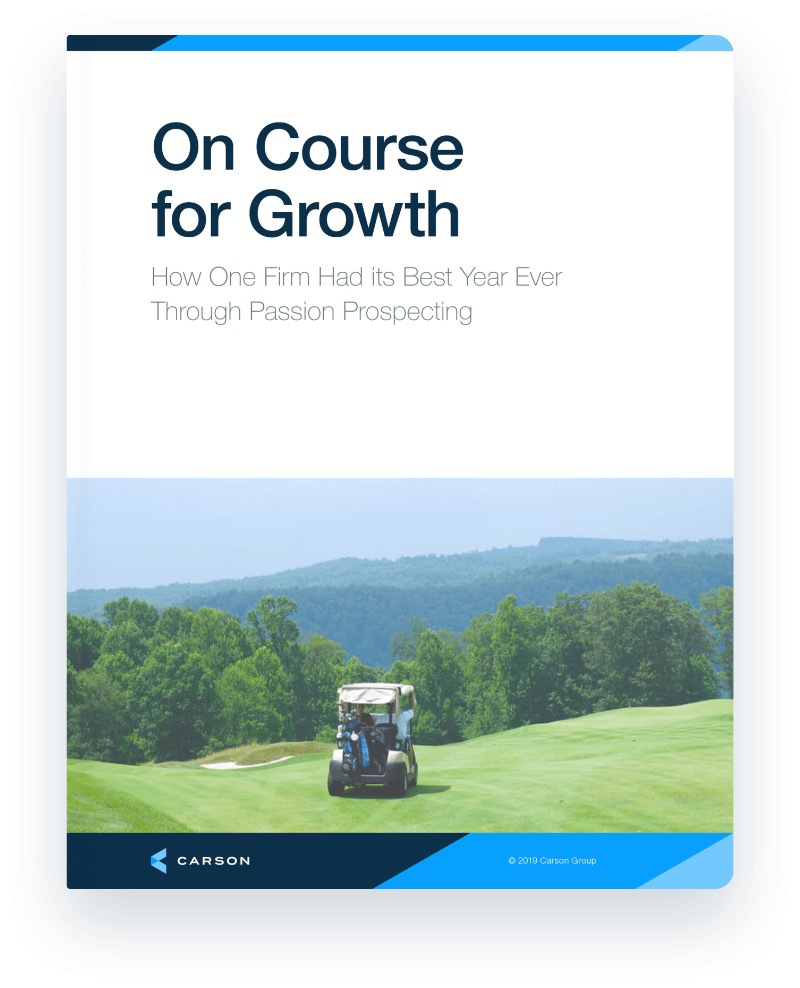This post is part of a series discussing the findings of the 2022 State of Women in Wealth Management Report.
In early 2022, my colleague Julie Ragatz, Ph.D., and I embarked on a research journey together. Our goal? Dive into the experience of women working in wealth management to uncover the barriers to entering and staying in the profession – and to develop solutions to those barriers.
A significant undertaking, I know.
The underrepresentation of women in wealth management becomes a more urgent problem every year. A study by McKinsey & Company reveals that by 2030, women will control $30 trillion of America’s wealth and that more than two-thirds will switch advisors once they take control of the assets.
And 70% of women would rather work with a female advisor, according to a study from the Insured Retirement Institute. If your firm doesn’t have female advisors, guess where those assets are going? Straight out the door.
Solving the underrepresentation problem isn’t just a question of diversity and making sure the profession looks more like the people it’s serving. It’s an economic imperative for every firm.
With that in mind, we developed the Women in Wealth Management report to track the profession’s success in addressing the key barriers causing underrepresentation. We’ll be repeating the survey every year, and working to implement solutions we uncover from our respondents.
2022 was year one. The top-line findings provide us a glimpse of the experience women have in wealth management careers – getting started, prospecting, advancing and leadership. Findings are based on a survey of 335 financial advice professionals from different channels.
The industry is currently ineffective at recruiting women into the financial advice profession.
Most women still come to the industry because they have a close relationship with a financial advisor, so they understand the role. Others come through adjacencies (banking, real estate, etc.). Most do not come through financial planning or economics programs in college, and college students are generally unaware that a financial advisor career is an option for them.
Caregiving obligations were the most significant barrier, followed by difficulty finding a firm that was a culture fit.
Participants cited the “second shift” that women still take on in their family lives as the primary barrier to staying in the industry. The lack of flexibility provided by most firms makes it challenging for women to meet the disproportionate amount of caregiving obligations they shoulder.
Gender-based discrimination comes into play in how clients choose advisors and how advisors choose other advisors for joint work.
Both men and women surveyed generally agreed that clients take gender into account when choosing an advisor, and that advisors take gender into account when selecting partners for joint work. Beyond that, 47% of commenters volunteered that the “old boys’ club” and workplace discrimination were real and present issues in their everyday lives.
Prospecting isn’t the barrier for women that some think it is.
Male respondents were more likely to report prospecting for new clients as a primary barrier to success for women. Female respondents only considered it a barrier at the very beginning of their careers. Just like with male advisors, prospecting became easier as the advisor became more experienced.
Men are more optimistic about how the profession is addressing underrepresentation.
Overall, male respondents believe the profession is doing a better job of recruitment, retention, getting women into leadership and fighting gender-based discrimination than women do. There’s a gap between the lived experience of women in the profession and the perception of that experience.
“Bad behavior” is still a problem.
While the survey intentionally didn’t ask about harassment or assault, nearly every woman interviewed volunteered information on their experiences, letting us know that “bad behavior” in the workplace and at industry conferences is still a problem that keeps women from staying in the profession.
Retention – not recruitment – is where we should focus efforts.
Virtually every recommendation to improve the representation of women in wealth management revolved around retention – what firms should do to keep and grow their existing employees, rather than recruitment. Women overwhelmingly said that greater time flexibility is the number one way the profession can keep them.
This is followed by training and education support, mentorship, more women in leadership, clear career pathing and genuine zero-tolerance policies on discrimination, harassment and assault.
The bottom line.
Of course, no survey is perfect. This one won’t reflect the experience of every woman in wealth management. We can only address the experiences of those surveyed. There’s clearly work to be done here, but the respondents have given us some good starting points. And they’re starting points that every firm has the power to start implementing.
Every firm can look at its flexible working policies.
Every firm can look at how they support education and training, as well the mentorship opportunities they provide both inside and outside the business.
Every firm can do a better job of creating clear career paths for male and female employees.
And every firm can enforce its codes of conduct with respect to how women are treated by male employees, vendors and clients.
None of these solutions is difficult, but they all require intentional effort and some committed focus. It’s a $30 trillion problem, and financial advisors have seven more years to solve it. So, let’s get to work.









